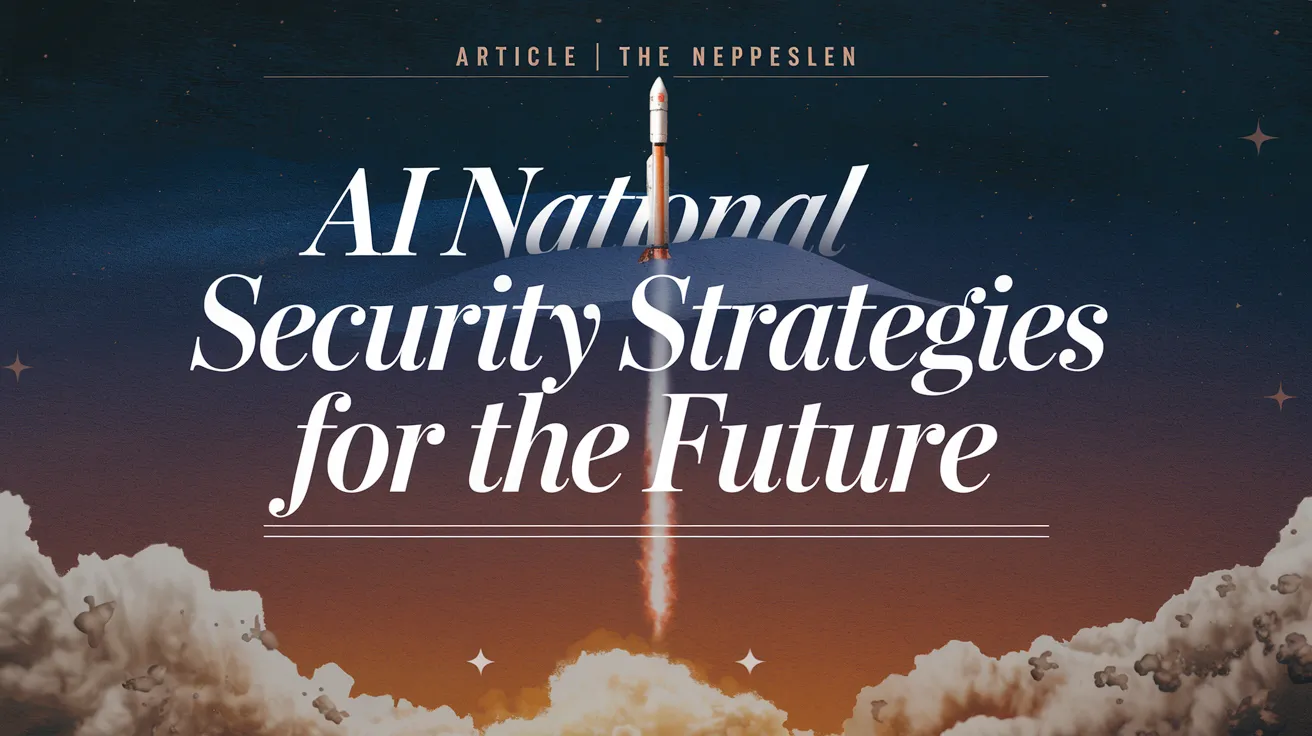AI National Security Strategies for the Future

The discourse surrounding artificial intelligence (AI) and national security has been reignited by a provocative new book, The Technological Republic: Hard Power, Soft Belief and the Future of the West, authored by Alexander C. Karp and Nicholas W. Zamiska. The authors argue for a more intimate collaboration between Silicon Valley and the US government as essential for ensuring national security in the face of increasing global threats. They draw parallels to the collaboration seen during the development of the atomic bomb, suggesting we may be on the brink of an ‘Oppenheimer moment’ in tech.
The Authors and Their Backgrounds
Karp, not your average tech entrepreneur, has an extensive academic background, holding a BA in philosophy, a law degree from Stanford, and a PhD in neoclassical social theory. He co-founded Palantir Technologies in 2003, a company notable for its machine-learning capabilities and controversial ties to US intelligence agencies, notably receiving funding from the CIA. Palantir stands out for harnessing vast amounts of data to uncover patterns, often drawing criticism for its ties to government surveillance.
Silicon Valley’s Missed Opportunities
The book critiques Silicon Valley for its historical focus on consumer products rather than technologies that could fortify national welfare and security. Karp highlights the irony that the very technologies propelling Silicon Valley’s success were initially built on government-backed advancements. This realization has led to frustration among critics who view the tech giant’s priorities as misaligned with broader societal needs.
Methodologies and Approaches
One insightful technique outlined in the book is the “Five Whys,” borrowed from lean manufacturing. This problem-solving approach encourages thorough inquiry into the root causes of issues, exemplifying a disciplined methodology that contrasts sharply with the sometimes chaotic innovation paradigm prevalent in tech today. The authors argue that this structured approach could yield significant improvements in tech deployment and accountability.
The New Call for Collaboration
Underlying much of Karp’s argument is a desire for a revival of the postwar collaboration between state and tech that birthed significant advancements. He posits that the US must rekindle this spirit to remain competitive globally, especially against rivals such as Russia and China. This call for collaboration lays the groundwork for re-evaluating existing technological frameworks and their application in national security contexts.
The Dual-edged Sword of AI
The authors grapple with the implications of AI technology being treated as vital to national security. If these technologies are predominantly controlled by large corporations, there raises a critical concern about the balance between national interests and individual rights—could this signaling of AI’s role in national security lead to an empowerment of surveillance and control mechanisms?
Reflections on Modern Warfare and AI
Traditional notions of military power and the ethics surrounding it come into focus, with Karp expressing irritation at tech employees’ reservations about military applications of their innovations. His perspective acknowledges that historical disconnects have led to an ‘80-year long holiday from history,’ now disrupted by current geopolitical tensions. This paradigm shift necessitates urgent discussions about how AI might both threaten and protect democratic values.
Final Thoughts on the Path Ahead
Karp’s commentary culminates in the notion that a robust national security posture requires us to leverage AI strategically. If the West fails to adapt, it risks falling behind adversaries already applying such technologies in adversarial ways. Hence, this critical zeitgeist around AI portends broader discussions about governance, ethics, and the fundamental role of technology in warfare and civic life.